The AI operating system reshapes the face 3D model to give the robot AMECA a real "emoji package"
Author:Deeptech deep technology Time:2022.09.09
Many people have been exposed to Transformers toys and animations when they are young, which may be the earliest robot they know. Today, fictional robots have gradually appeared in the real world and become human strong helpers in many ways.
The robotic arms in the factory, nano robots in medicine, and Mars robots have brought unprecedented convenience to human exploration of unknown areas, and have become an accelerator for science and technology progress.
"Looking back at a smile, the sixth palace Fan Dai has no color."
Now, expressions are no longer exclusive to humans. Engineering Arts uses AI technology to repeat human expressions on robots, so that the cold machine also has a complete set of human "emoji packages", which is instantly given to humans. Emotion. The history of the robot is just the first stage of the appearance that is similar to humans, and it has entered the second stage that can express emotions such as human joy and sorrow.
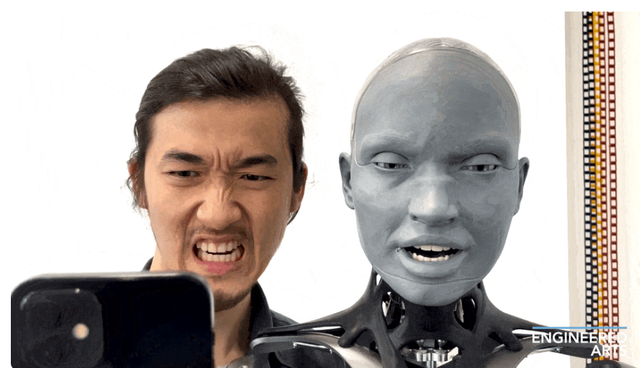
Figure | Ameca's realistic facial expression (Source: Engineering Arts)
Recently, the company will have the facial expression movement of the robot AMECA (Ameka), which has been shown, to make updates and upgrades at the technical level, making it more realistic, agile and vivid.

Figure | AMECA (Source: Engineering Arts)
According to the official website of ENGINEERING Arts, AMECA weighs 49 kg and 187 cm tall as the most highlights and innovative thinking. The body consists of dozens of components.
AMECA can freely perform dozens of human limb movements. It has been exhibited at the world -renowned robot exhibition. The popularity of the industry has risen rapidly and has been given the honorary title of "the world's most realistic robot".

Figure | Human facial muscles (Source: Pixabay)
According to human anatomy data, as many as dozens of human facial muscles, helping humans accurately show a single expression of joy and sorrow, and composite expressions made under different external stimuli. Therefore, it is difficult to be imitated by a person's facial expression.
In order to give AMECA's expression to human beings, Engineering Arts has a long way to do it. In order to ensure that AMECA's face can also make accurate response to external stimuli, the company has the most advanced sensing device on physical hardware.
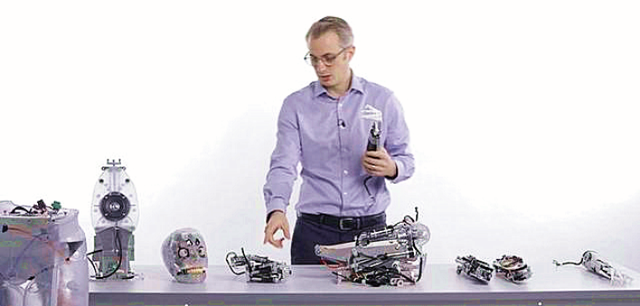
Figure | Ameca's modular display (Source: Engineering Arts)
After scanning the facial expression of human beings, scientists use data modeling with various expressions such as muscles and other data to make 3D printing and make molds. Then, equip the robot with multiple groups of components, and is divided into each module for assembly to facilitate future maintenance and transformation and upgrading.
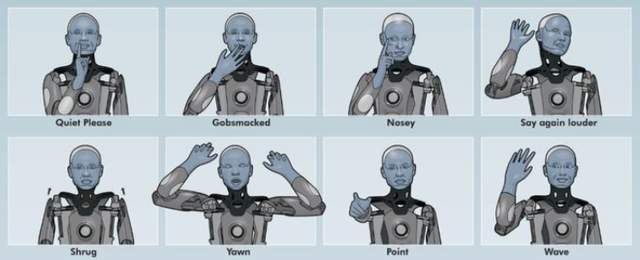

Figure | 12 expressions of AMECA (Source: Engineering Arts)
As a result, when the computer is connected to the machine, the vivid and fresh facial expressions were engraved on the robot, and Ameca successfully showed imitation human facial expressions such as pouting, blinking, frowning, anger, sadness and other imitation.
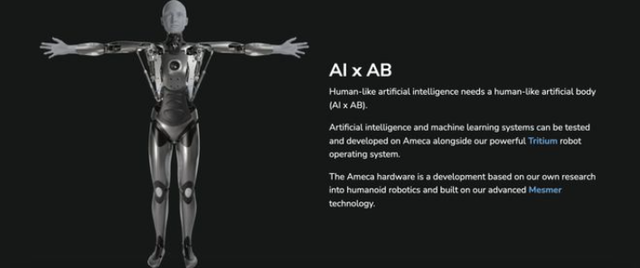
Figure | AMECA's artificial intelligence body AI × AB (Source: Engineering Arts)
The construction process of Ameca's expression is complicated. It is necessary to use the "Tritium operating system" and "Mesmer Technology" to equip the robot with artificial intelligence body (AI × AB).
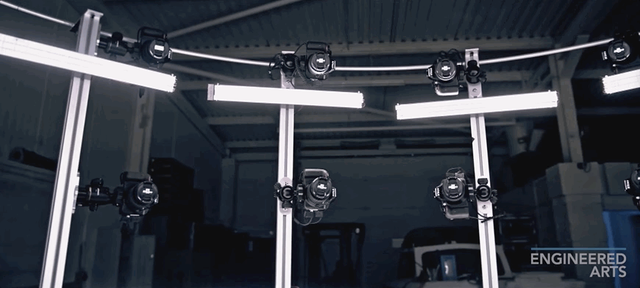
Figure | Mesmer Technology Camera (Source: Engineering Arts)

Figure | AMECA's silicone model (Source: Engineering Arts)

Figure | AMECA's internal machine structure (Source: Engineering Arts)
The computer operating system constructed by Mesmer technology can be used to make simulation robots, collecting a large number of human facial bone and muscle structure data for AMECA, and conducting nearly 40 video devices to scan the human body with a full range of angles.
Then, the Mesmer system captured the expression and positioning of the robot, reshaped the 3D model, and finally used the 3D printing mechanism to make the model to make the silicone of the filled model into a real -life -like face to simulate the skin.

Figure | Tritium operating system (Source: Engineering Arts)
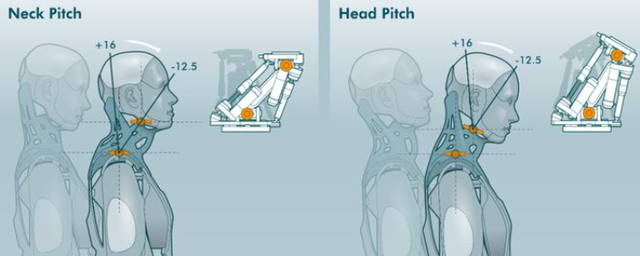
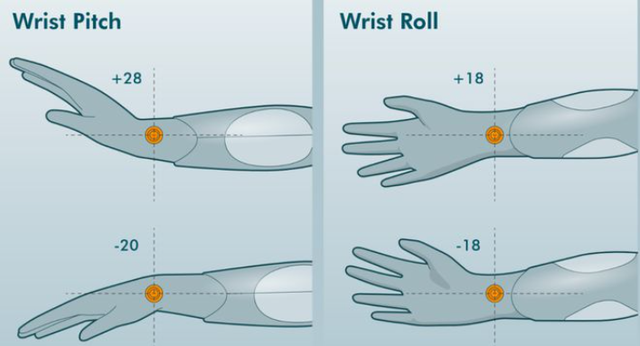
Figure | Ameca's facial and limb structure (Source: Engineering Arts)
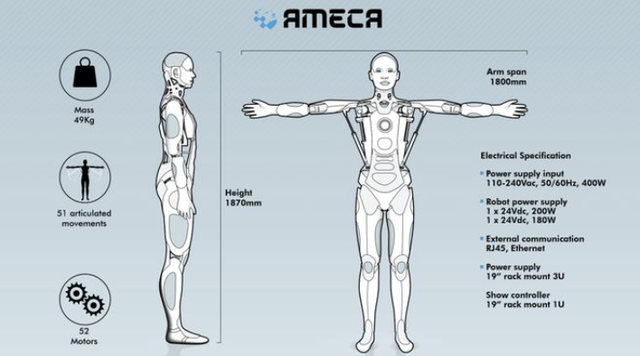
Figure | AMECA framework schematic diagram (Source: Engineering Arts)
It is not as easy to make the robot show different "emoticons". Under the control of the algorithm, the Tritium operating system has injected vitality into the robot, connecting software, hardware and clouds, and each module that drives hardware, including heads, bones, limbs, etc. to produce actions. Although AMECA has done the ultimate in terms of expression display, it cannot walk.
Engineering Arts plans to upgrade it to make it a multi -faceted hand with more functions such as walking and running. In the future, AMECA can be used to make movies, acting as a substitute for a network seminar, or facial plastic surgery.
The addition of more advanced artificial intelligence technology such as expressions and limb movements makes the robot more real and lively. Recalling the scene in the cartoon "Tong Tong Tong", it is still vivid. The robot walks on the street and is no different from humans.
Perhaps, in the near future, robots that are given human emotions like AMECA will be manufactured, which may have an important impact on all aspects of human society.
The robots that appear in science fiction blockbusters such as "Star Wars" and "Mechanical Men" may often accompany us and coexist with humans. When people walk on the road, they may not be able to distinguish between real human and simulation robots.
Reference materials: https://www.engineeredarts.co.uk/zh/robot/amEca/https: //nerdist.com/article/robot-tetistic-Expressions-Engineering-rmeca///

- END -
Academician Forum 丨 Zhan Qimin: Will artificial intelligence replace doctors?

Zhan Qimin, an academician of the Chinese Academy of Engineering, director of the ...
How to learn for life?The middle class and the useless class, who is [Digital abandoned people]

Compared with the intellectual revolution in history, only in the end of the 19th ...